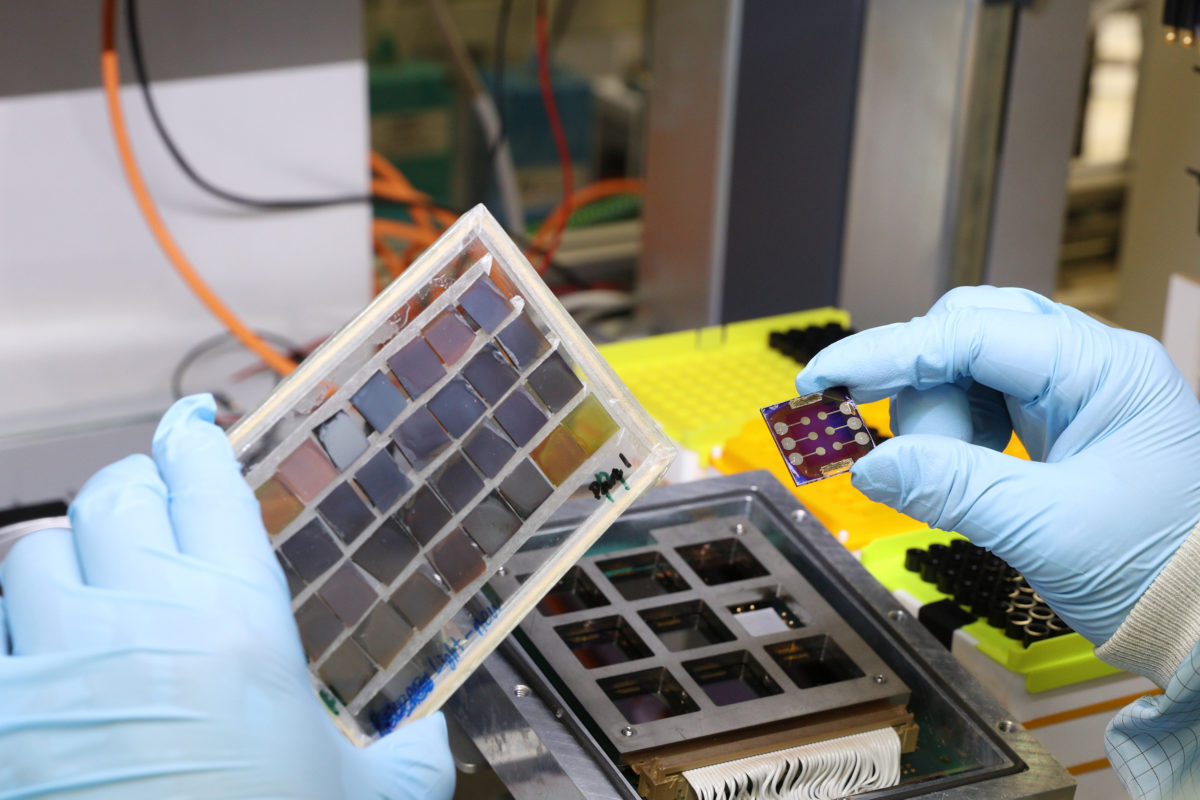A group of researchers from Germany’s Forschungszentrum Jülich has developed a planar perovskite solar cell that is claimed to reach over 1,400 hours of operational stability at elevated temperatures.
Before choosing the perovskite material for the cell, the scientists tested hundreds of different perovskite mixtures and investigated, in particular, their thermal stability using a self-constructed, high-throughput screening platform.
The 20.9% efficient device was built without the ionic dopants or metal oxide nanoparticles that are commonly used to contact the cell, as these can be subject to secondary reactions at higher temperatures, they further explained.
The entire cell electrode was embedded in a sort of protective shell with a double-layer polymer structure, with the bottom side undoped and the top side doped with a non-ionic dopant, which is claimed to protect against degradation and, at the same time, ensures that the contact is maintained. “This architecture protects the very sensitive interface to the perovskite and, on the other hand, it shows exceptionally stable conductivity, even at elevated temperatures,” they emphasized. “The dopant-free polymer provides an acid barrier between the perovskite and the acid-doped polymer.”
Under standard illumination conditions, the cell was able to operate for 1,450 hours at elevated temperatures of around 65 degrees Celsius and, at the end of the testing period, it still retained 99% of its original efficiency.
Popular content
“Long-term prediction is always difficult but the perovskite solar cell we have now developed could certainly be operated for more than 20,000 hours, under normal circumstances,” said researcher Christoph Brabec.
The cell was presented in the paper A bilayer conducting polymer structure for planar perovskite solar cells with over 1,400 hours operational stability at elevated temperatures, which was recently published in nature energy.
Looking forward, the academics say they want to improve cell efficiency. “With an efficiency of 20.9%, the tested cell does not yet fully exploit the potential. Twenty-four to 25% should be possible in the near future,” explained research co-author, Yicheng Zhao.
This content is protected by copyright and may not be reused. If you want to cooperate with us and would like to reuse some of our content, please contact: editors@pv-magazine.com.



1 comment
By submitting this form you agree to pv magazine using your data for the purposes of publishing your comment.
Your personal data will only be disclosed or otherwise transmitted to third parties for the purposes of spam filtering or if this is necessary for technical maintenance of the website. Any other transfer to third parties will not take place unless this is justified on the basis of applicable data protection regulations or if pv magazine is legally obliged to do so.
You may revoke this consent at any time with effect for the future, in which case your personal data will be deleted immediately. Otherwise, your data will be deleted if pv magazine has processed your request or the purpose of data storage is fulfilled.
Further information on data privacy can be found in our Data Protection Policy.